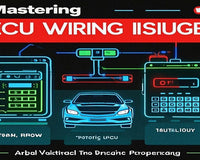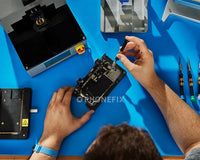
There are several different types of car tuning, each with its own characteristics and benefits. Here's a overview of some of the most common types:
Performance Tuning
Performance tuning is all about improving the power and responsiveness of your vehicle. This type of tuning can involve a number of different modifications, including: upgrading the engine with aftermarket parts, improving the exhaust system for better airflow, optimizing the vehicle's suspension for better handling, adjusting the car's computer system (ECU) for improved performance. Performance tuning with the KTAG MASTER ECU Programmer can significantly increase horsepower and torque, as well as improve acceleration and the overall driving experience.

Fuel Efficiency Tuning
Fuel efficiency tuning focuses on optimizing the vehicle's engine and other systems to achieve better fuel economy. This can involve a variety of modifications. MPM OTG programming can adjust a multitude of parameters such as spark, fuel, RPM limits, exhaust valve control and more. Improves vehicle aerodynamics to reduce drag and increase fuel efficiency by adjusting the engine's fuel-air mixture

Personalization Tuning
Personalization tuning is about adjusting your vehicle's systems and settings to better fit your driving style and preferences. This can include: adjusting the suspension for a softer or firmer ride, changing the engine's throttle response for quicker or smoother acceleration, modifying the vehicle's steering for better feedback, etc.
While the specific benefits of car tuning can vary greatly depending on the type of modifications made, several common advantages are associated with tuning a vehicle:
1. Enhanced Performance
2. Increased Fuel Efficiency
3. Personalized Driving Experience
Drawbacks of Car Tuning
1. Cost: Depending on the specific modifications made, car tuning can be quite expensive.
2. Reliability Concerns: tuning a car can lead to reliability concerns.
3. Warranty Issues: tuning a car can sometimes void the manufacturer's warranty.
How to Tune Your Car?

The first step in tuning your car is to research your options. This can involve reading about different types of tuning, watching videos, and consulting with experts that can help you better understand the various tuning options available.
Choose a Qualified Professional
Some drivers choose to perform tuning work themself, If you choose to adjust yourself, you can buy professional car adjustment tools, ECU programmers at the China ecufixtool store. themselves,many opt to hire a qualified professional. If you decide to go this route, it's important to choose a reputable mechanic or tuning shop with experience in the specific type of tuning you're interested in.
Monitor Results
After your car has been tuned, it's important to monitor the results. This can involve keeping track of the vehicle's performance, fuel efficiency, and any changes in ride comfort.
Car tuning offers a wide array of possibilities for those looking to enhance their vehicle's performance, improve fuel efficiency, or personalize their driving experience. By understanding the different types of tuning available, their potential benefits and drawbacks, and how to go about tuning your car, you can make informed decisions that best suit your needs and preferences.










